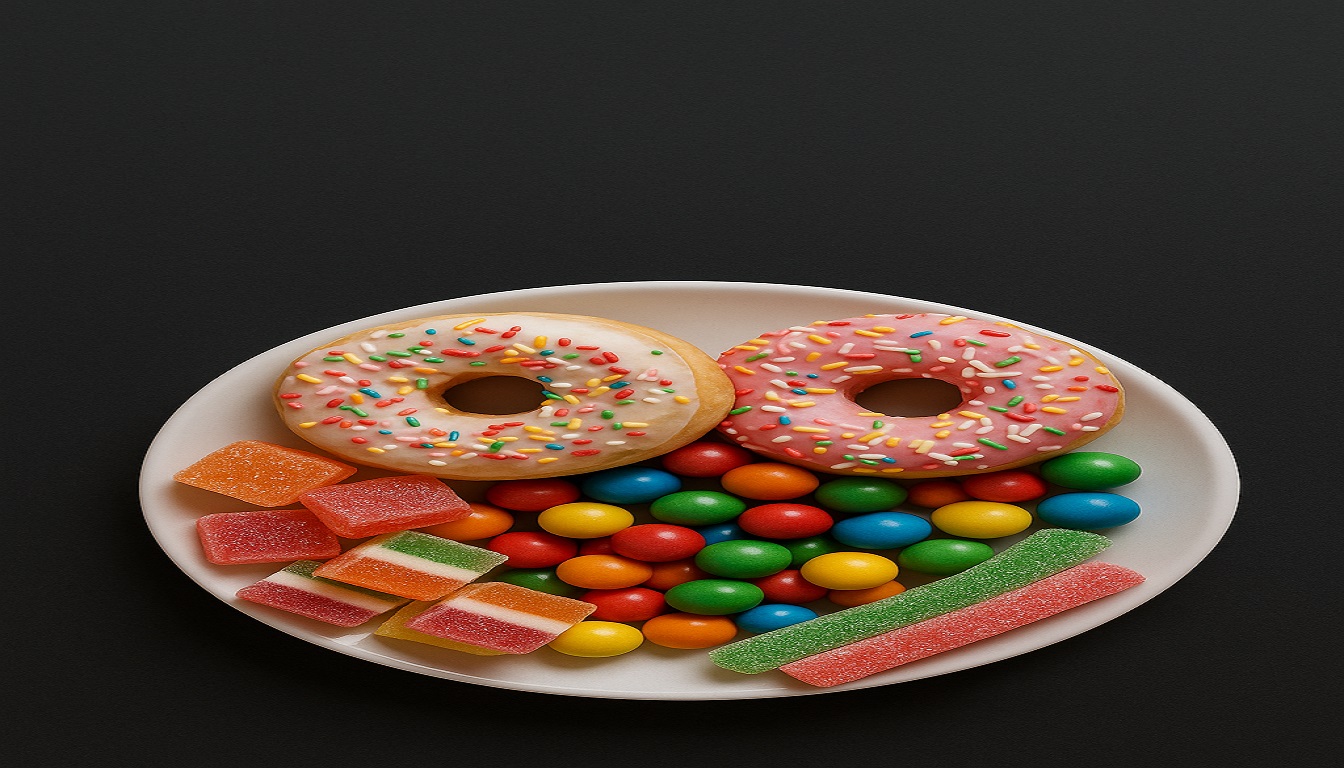
Jonathan sat across from me last Friday during our afternoon consultation, tired eyes and slumped shoulders giving away more than his words. “I crash every afternoon, even after breakfast,” he said, thinking he’s doing everything right with his granola bar and yogurt. I nodded, recalling the dozens of patients I’ve seen caught in the same cycle. “That combo has more hidden sugars than a donut,” I told him gently. Startled, he blinked—“But it’s natural!” he objected. I smiled, not unsympathetically.
“Hidden sugars fool everyone. They spike your blood sugar, then crash it—leaving you drained and craving more.” It’s a classic case of your body on sweets: how hidden sugars are silently sabotaging your health. I’ve seen the pattern too many times—and I know it can be reversed.
Today, the average person consumes over 17 teaspoons of added sugar daily—far exceeding the World Health Organization’s recommended limit of 6 teaspoons for women and 9 teaspoons for men.
Sugar isn’t just in the obvious treats like sodas and pastries; it’s lurking in everything from salad dressings to breakfast cereals (CDC, 2024).
How Hidden Sugars Begin Our Health Sabotage
The moment you eat something sugary, your blood glucose spikes. Your body responds by releasing insulin, a hormone that helps your cells absorb sugar for energy. At first, you feel good—energized, even euphoric.
But that sugar rush is short-lived. Within an hour or two, your blood sugar crashes, leaving you tired, cranky, and craving more sweets. It’s a vicious cycle that wears down your body over time.
Dr. Nhlanhla Nkosi, a nutritionist based in South Africa, explains:
“Sugar lights up the brain’s reward centers much like addictive drugs. Over time, it can rewire the brain’s chemistry, increasing dependency while dulling the body’s natural hunger cues” (Nutrition Society of South Africa).
This metabolic chaos doesn’t stay in your bloodstream—it ripples through every organ system you have.
The Long-Term Health Sabotage by Hidden Sugars
Hidden Sugars and Heart Health
Research shows that people who consume more added sugar are twice as likely to die from heart disease compared to those who consume less (JAMA, 2014). Sugar increases inflammation, raises bad cholesterol (LDL), and stiffens arteries—all major risk factors for cardiovascular diseases like hypertension.
Read also: 5 Lifestyle Changes to Lower Blood Pressure Naturally
Effects of Hidden Sugars on Brain Health
A 2024 study in Frontiers in Neuroscience linked high-sugar diets with impaired memory and an increased risk of Alzheimer’s disease. Constant blood sugar swings also fuel anxiety and depression.
Professor Stella Koku, a Ghanaian endocrinologist, notes:
“We are now seeing younger patients across Africa suffering from ‘lifestyle diseases’ like stroke and cognitive decline—and added sugars are a major, under-discussed culprit.”
Metabolic Disorders and Hidden Sugars
It’s well-known that sugar drives type 2 diabetes, but it also contributes to non-alcoholic fatty liver disease, a silent epidemic now affecting children too (CDC).
Read also: Diabetes Mellitus: Causes, Signs, and Management Strategies
Skin and Aging Effects of Hidden Sugars
Excess sugar binds to collagen and elastin proteins in the skin, a process called glycation. The result? More wrinkles, sagging, and premature aging (Harvard T.H. Chan School of Public Health).
Read also: The Lifeline of Hydration: Why Drinking Water is Essential
The Hidden Sources of Added Sugar
Cutting sugar isn’t just about avoiding cake. Added sugars are sneaky.
- “Healthy” yogurts
- Breakfast cereals
- Sauces like ketchup and barbecue
- Granola and snack bars
- Flavored waters and “vitamin” drinks
- Packaged breads and crackers
Even foods labeled “natural” or “organic” can be loaded with hidden sugars. Look out for ingredients like:
- Cane juice
- Agave nectar
- Corn syrup
- Brown rice syrup
- Anything ending in “-ose” (e.g., dextrose, maltose)
Dr. William Li, physician and author of Eat to Beat Disease, advises:
“Reading labels is your secret weapon. If sugar, in any form, is one of the first three ingredients, beware” (DrWilliamLi.com).
How to Reduce Hidden Sugars Without Feeling Deprived
Read Labels Religiously
Focus on added sugars—not just total sugar content. Brands often sneak sweeteners into “healthy” foods.
Choose Whole Foods

Whole fruits, vegetables, legumes, and whole grains provide natural sugars with fiber, slowing down absorption and preventing crashes.
Make Smart Swaps
- Swap soda for sparkling water with lemon.
- Use cinnamon or vanilla instead of sugar.
- Try natural sweeteners like stevia or monk fruit in moderation.
Practice Mindful Eating

Stress often drives sugar cravings. Incorporate calming practices like meditation, journaling, or deep breathing.
Dr. Amina Yusuf, a Lagos-based health psychologist, shares:
“Often, our cravings for sugar are emotional, not physical. Learning to sit with discomfort instead of numbing it with sweets can be transformative.”
Reduce Gradually
Don’t quit cold turkey. Cutting back slowly—one teaspoon at a time—can help your taste buds adjust for the long haul.
Small Changes, Big Results: Success Stories

In Kenya, the Sugarsmart Nairobi initiative helped residents of Mathare reduce sugar intake by 30% in six months, simply by swapping sodas for tamarind water (Nation Africa).
In the U.S., a major study found that cutting just 5% of calories from sugar reduced heart disease risk by 20% within a year (Harvard Health).
Final Thoughts
“How Hidden Sugars Sabotage Your Health” isn’t just a catchy phrase—it’s a wake-up call. Hidden sugars are quietly undermining your well-being from the inside out.
Fortunately, you can turn things around. By reading labels, eating whole foods, and managing your stress, you can reclaim control of your health.
Your body—and your future—will thank you.
This post is for educational purposes only; therefore, consult a qualified healthcare professional before making any medical decision.
Kindly Subscribe, Like and Share this post.
Related Reading
RELATED POSTS
View all



